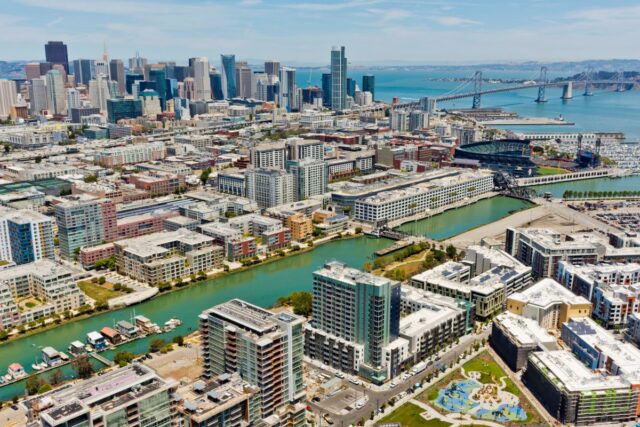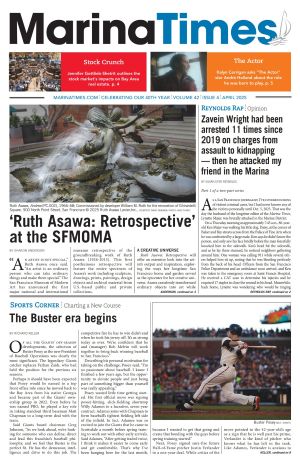The year began with strong activity and renewed momentum across Bay Area real estate, despite persistently high interest rates. A buoyant stock market and optimism surrounding San Francisco’s new mayor Daniel Lurie helped drive robust activity in Q1. Butch Haze, a luxury agent at Compass, described, “There was a euphoria that took place with a new mayor, and it was palpable. January, right out of the gate, was one of the hottest markets we’ve seen in San Francisco in a long time, and yet rates hadn’t changed. We saw the stock market bustling, and it was electric.”
But by April, that momentum quickly shifted due to geopolitical headwinds, with fears over tariffs and stock market volatility affecting buyer confidence. The uncertainty hit the condo market particularly hard. And while turn-key houses in prime neighborhoods continued to attract strong interest, many condos — especially those in downtown high-rises — have struggled. “Buyers can deal with a bad market, and they can deal with a good market — but what they can’t deal with is uncertainty,” said Haze.
Downtown and Mission Bay Attract New Investment
Downtown San Francisco has taken some very harsh blows after the pandemic triggered a mass exodus of residents and office workers, leaving behind emptier streets, shuttered storefronts, and rising concerns about rampant crime and drug use. In the past five years, too many major retailers have pulled out, and commercial vacancy rates soared, creating a ripple effect that drained energy and confidence from the city.
This year, however, there have been signs of promising growth in both San Francisco’s retail and office sectors, bolstered by revitalization efforts from the city and other key stakeholders. Now, a growing segment of influential players and investors are eying these opportunities downtown and betting on its long-term future. “I think purchasing downtown is the most exciting real estate opportunity that’s been available in a long time,” said Haze. “The area was so beat up … but you can already see some of our ultra-high net worth clients investing into Jackson Square. That positive energy is going all through the SOMA area and the East Cut.”
This renewed confidence is bolstered by significant corporate commitments. A recent report by CRE Daily noted that quarterly office leasing activity in San Francisco surged to a 10-year high in Q1 2025. Databricks announced a plan for a $1 billion investment in San Francisco over the next three years, including a new 150,000-square-foot headquarters at One Sansome, according to SF Chronicle. Other major players like JPMorgan Chase, Google and Anthropic are also expanding their footprints in the city. Most recently, Coinbase is negotiating a lease for a new 150,000-square-foot headquarters at Mission Rock, marking an emphasis on in-person operations after years of remote work.
Retail is also experiencing a revival. New flagship stores from Zara and Nintendo are opening in Union Square, and Polo Ralph Lauren is opening in Jackson Square, signaling renewed interest in the city’s commercial corridors. Meanwhile, initiatives like the Vacant to Vibrant program, supported by a $1 million investment from Wells Fargo, aim to transform empty storefronts into thriving pop-up shops, injecting vitality into downtown streets, according to Axios San Francisco.
Mission Bay’s Resurgence
Mission Bay is similarly booming with revived energy, after an influx of new office leasing activity and restaurant openings this year. Once quiet and underdeveloped, the area is home to UCSF and Thrive City and is now quickly becoming a magnet for biotech, AI, and ambitious startups. The explosive growth of AI companies, led by OpenAI’s significant presence, has transformed Mission Bay’s landscape and office vacancy rates. OpenAi’s office policy of requiring in-office attendance five days a week is a bold move and reviving the former trend of in-office culture for tech employees. According to real estate firm Cushman & Wakefield in the SF Standard, the area’s office vacancy rate is 12.2%, significantly lower than the citywide average, and the neighborhood is commanding more than double the price per square foot rate compared to office leases in FiDi and SoMa.
Looking ahead, industry professionals seem optimistic that the market is poised for continued resilience and growth, especially now fueled by the most recent stock market rebound in May. Traditionally, the Bay Area’s real estate market starts to slow down in June but Haze suggests that this year’s summer market may be different. He observed, “I see an amazing adjustment with buyers not being scared off by high interest rates and really understanding that rates are going to come down and there are opportunities right now.”
Jennifer Gottlieb-Shetrit is a realtor (CalDRE#: 02045019) at Compass serving the San Francisco Bay Area. She can be reached at [email protected] or www.JenniferShetrit.com.




